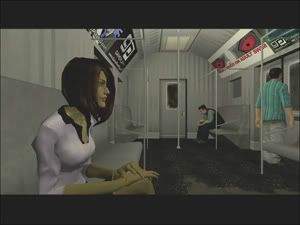(This is pretty much an unedited transcript of a rant I had in the office yesterday. If four-letter words offend you, shut your eyes when you read them.)
As you might expect for a company on the periphery of the movie world, the office Skype chat at Short Fuze is filled with news of upcoming movies. Most of the time, this is greeted with groans, wailing and gnashing of teeth as we find out about yet another sequel, remake, or adaptation. This week the screams of total anguish hit record levels as we found out about
Blade Runner 2. (Or in my case, the remake of
Angel Heart.)
"Why, oh why, do they have to fuck with my favourite film / book / comic / TV show?" the assembled crowd shout out every time we hear about another of these movies. "It's going to be dreadful, you can't better the
original, why can't they think of anything original these days... blah blah
Phantom Menace blah blah..."
Well, people, it's your own damn fault. So you're all gonna hate
Blade Runner 2, right? On principle. (Except Chris, who stuck up for it.) So why the hell is it, when I ask you if you're going to see it, you say "Well, yes, it is
Blade Runner, after all." That's why they make these shit-awful movies. Because people like you will give them money to see them, even if you don't bloody like them. (Hands up all those who went to see
Star Wars Eps 2 & 3 even though they hated them.
Matrix 2 & 3?
Spiderman 2?
Resident Evil?
Doom? Yeah, you know who you are.)
My youngest daughter, who's now ten, has gone through all the usual obsessions of a modern Western girl. Winnie the Pooh, Teletubbies, Barbie, Bratz,
High School Musical, and so on. And like all kids, she's a sucker for merchandise. If she sees something with her current favourite brand on, she immediately wants it, even if she doesn't actually want the item in question. "Look, Daddy, a rectal thermometer for a hamster, can I have it? It's pink and it's got Barbie Sleeping Beauty on it, pleeeease! It's only £17.99...." And if she had her own money, she'd damn well buy it too, even though she hasn't even got a bloody hamster. The only thing that stops her handing over all her money to Mattel and Disney is the fact that she hasn't actually got any. I'm just hoping she grows out of it by the time she's old enough to have a credit card.
And how exactly is that different from people who go and see a movie they know they won't like, just because it has a tenuous relationship to a movie (or book, film, or game) they do like? It's not a film, it's a piece of merchandise made by the film industry, and you fell for it. Why do they fuck with your favourite film? Because they will make money. They're not in it for the art. They don't give a shit about the characters, the worlds, or the stories you love. They're a business, and if they can get away with selling you crap, they'll make crap, and laugh all the way to the bank.
Now, before you all jump on me and accuse me of saying we shouldn't make sequels, we shouldn't remake films, and we shouldn't adapt things, that's not what I'm saying at all. Some sequels are great (
Aliens, the second two
Indy movies,
Bride of Frankenstein), and some remakes work really well (
The Grudge, Peter Jackson's
King Kong*, Magnificent Seven). And the film industry has a long and proud tradition of adapting from other media
(Jungle Book,
Lolita,
Treasure of the Sierra Madre,
Chocolat, Throne of Blood). When done well, these make really enjoyable films. There's nothing wrong from an artistic point of view with sequels, remakes & adaptations, provided they're made with love and respect.** There's just something wrong with an artistic culture that seemingly can't think of anything else and treats its source material and audience so cynically.
However, If you look back at the history of Hollywood, from about 1930 onwards, only about 20%-25% of films have ever been based on completely original scripts. About 30%-35% are adaptations of books, and the rest are a mixture of remakes, sequels, and adaptations from other media. The change we're seeing now, though, is that nearly all the top budget and high profile films are drawn from the latter category, and fewer and fewer are originals. That's because they're comparatively low risk. If a studio sinks $75m into making a
Blade Runner sequel, they can be pretty certain there are ten million
Blade Runner fanboys out there who'll go and see it (and then buy the DVD, and while they're at it, buy the re-issued original yet again, and then buy the box set, and the director's cut special edition with the limited edition postcards in, and the new action figures, yadda yadda yadda) that they will be certain to make their money back. And the fan networks will do their advertising for them. (Like I am, right now, by so publicly ranting about it. Guilty.) But if the studio puts that $75m into making
exactly the same script but without the
Blade Runner name on it, they'll have an uphill struggle to convince people to go and see it, they won't do as well out of merchandising rights, and they could well lose money. So from a pure business point of view, it's a no-brainer.
(Compare that with Bollywood or the European film industry where there are relatively few sequels etc, and the whole business is very different. But that's a post for another day.)
Rant nearly over. Thanks for sticking with me this far.
Here's the message. It's a simple one.
If you don't like the fucking film, don't go and see it. And quit bitching. Nobody's making you watch those movies except you.
If we, the public, stop giving Hollywood money for their lame-brain exploitative knock-offs, they'll eventually stop making them. That's the only language they understand. There are thousands of brilliant, original, almost unknown movies out there. Go and see one of them instead, and show some independent film-maker who's pouring his heart and soul into a movie that what he's doing is far more worthwhile than some pointless $100m special effects extravaganza.
Or, to quote Lloyd Kaufman, boss of Troma,
make your own damn movie!
(I think that's my Hollywood career over before it's begun. Unless maybe those
Miramax fucks will have me?)
*Yes, I do actually quite like Jackson's King Kong. It has its flaws (editing, Peter, it's where you cut out the boring bits and keep the tension up), and I still prefer the original, but it works as a film, and it speaks to the modern generation with as much depth as the original spoke to me. What comes across is that Jackson made his version of Kong with love and respect, and he wasn't just banging out a cheap money-grabber like Dino de Laurentiis did. Now that's a shit remake.** And in general, I'd prefer to see an adaptation or remake of something I don't already know. Many times I've watched a film, thoroughly enjoyed it, and only then seen the words "Based on the novel by..." If I already know the source, I'm immediately comparing it to the film as I watch it, and start asking myself why they did it that way, which isn't nearly as much fun.




















